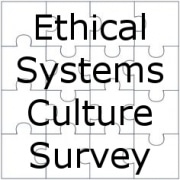Good vs. Good: Using Empathy and Effort to Grasp Opposing Views

In the United States, yawning political and social divides are manifesting in the workplace, and this poses significant challenges for employers and employees alike. With the presidential primaries settled and the November general election approaching, employers are already bracing for heightened political discussions and disagreements. Political discord from opposing views can lead to a hostile work environment and affect productivity. A survey by the Society for Human Resource Management found a rise in workplace political discussions and volatility.
We all know that a part of the solution is to step out of our echo chambers and truly try to understand others. In my journey of learning about different political ideologies, I’ve discovered that the key to bridging these divides involves “perspective taking,” though in a very specific way. Attempts at taking another person’s perspective can fail—or even make matters worse—if the process focuses on emotions or develops little more than a caricature of the other person. Doing it successfully requires more than curiosity and concern. It takes specific tools.
We all experience genuine perplexity when we ponder the workings of a human mind, particularly that of an adversary. So for several years, I’ve made a concerted, if not obsessive, effort to understand people with whom I disagree politically. This is no novel or transient undertaking: I’ve obtained three degrees in psychology with the singular goal of understanding people.
When I recently started sharing what I’ve learned from the aforementioned efforts, nearly everyone I told seemed intrigued by this particular conclusion: You cannot understand someone else’s viewpoint until you comprehend how they believe they are on the side of good. (More specifically, I usually say you need to understand how they see themselves as the “good guy,” but the side of good is more concise.)
The side of good is constructed from a combination of what someone perceives to be a correct set of facts, logical reasoning, and values (i.e., moral foundations). Understanding this in others is not just a matter of seeing what they believe, but also grasping the how and why behind their beliefs.
Since I’ve also written a lot recently about political polarization and ethical culture in the workplace, I’d like to expand on these ideas by sharing conclusions I reached regarding political understanding. I hope these thoughts can help you manage politics in the workplace, whether you are struggling to understand one person’s views or to deal with a dominant view you find disagreeable in the organization.
Seeing the good through empathy and effort
If you can honestly say that you have a good understanding of your opponent’s position and how they see it as the side of good, you’ve already crossed an important barrier. You no longer see them as an incomprehensible or ill-intentioned person.
If not, how do you achieve this? A very simple way is to converse politely, maintaining a clear intention to discover the underlying side-of-good narrative that the other person believes to be true. This alone can immediately lead to more civil interaction and speed direct progress toward your goal.
A key objection here might be that the person you are talking with may not harbor good intentions. This is possible but unlikely. To tether your perception to reality, only about 1% (1 in 100) to 4% (1 in 25) of people are statistically expected to behave in an antisocial or psychopathic manner. So it’s important to acknowledge that a belief held by a majority of people—or even by a significant minority—cannot itself be presumed to reflect psychopathic or sociopathic tendencies.
On commencing dialogue, you’ll inevitably be offered evidence in favor of your interlocutor’s position, probably something they want you to read, watch, or listen to. Within reason, take them up on the offer and do so with genuine interest. It is highly productive to go outside your bubble by taking in content from an unlikely source; material from outside your comfort zone can be stimulating, to say the least. Most useful is long-form video content or a book—something that will entail lengthy explanation of the counter position. What do you have to lose? The idea that information must be wrong because of its source is one of those logical fallacies (genetic fallacy) we need to avoid using whenever we aim to take part in logical discourse. Put aside your ego and preconceptions. Just listen—and invest some genuine interest in what they have to say.
But what if they just want you to watch bald propaganda, fake news, or conspiracy theories? In attempting to take their perspective, it’s important to look into what they are saying and to investigate their claims. If you can then demonstrate that the claims they made were false, you will have made progress in that you are not judging or dismissing the person, only specific ideas they proposed. You will have respected them.
Long-form content of one, two, or three hours that you can watch in increments is recommended, because bite-sized, shallow content is what mars political discourse today. Long-form material entails the creation of an argument and the concentration to absorb and critique it. While posts on X, Facebook, TikTok, memes, slogans, and bumper stickers generally fail to get people to ponder important issues, they dominate the current ecosystem of political discourse.
Subscribe to the Ethical Systems newsletter
Still, people tend to pursue only long-form content put forth by people they agree with, and this further entrenches like-minded thinking as they soak in comforting, confirmatory conversation. That’s a very good reason to break the mold and yield some time to the opposition. When you view opposing content in long form, you take it in completely and in context. You get to know your opponents far better. I have lost count of how many times my viewing of an event in its entirety helped immunize me to lies and misstatements about it, essentially “prebunking” any attempts to deceive me as to what took place. You may have experienced this on watching, say, a debate and then viewing summaries or criticism of what seems an entirely different event.
Skills that power progress and diminish deception
Once you are able to see how both you and your interlocutor see yourselves on the side of good, it will become clear that each side is predicated on certain facts or logic that, if true, make it the side of good. A productive dialogue can now take place because you have arrived at the original—and often, seemingly distant—source of your disagreement.
There is some personal risk in seeking information that’s likely to change your opinion if you are susceptible to tricky tactics. Certain skills relevant to this process will help. You may want to strengthen your mental immunity to start with. You might also try this game, wherein you play the role of an intentional misinformation spreader and thereby improve your ability to detect manipulation. Refreshing your memory of logical fallacies is a good idea, too. These tools offer great ways to frame disagreements by opening the door to communication, not invective.
When you investigate opponents’ views by engaging with their content, you are very likely to do so with skepticism, because you disagree with the ideas or dislike their advocates. The upside? You’ll be able to detect and observe the techniques they use to manipulate—something that’s unlikely to happen when you remain in your comfort zone.
Once we note a pattern or technique, we’re likely to spot it again with greater ease. For instance, many know the quote “Appear weak when you are strong, and strong when you are weak” from Sun Tzu’s Art of War. In strategic situations, those familiar with this tactic are constantly assessing whether an opponent’s apparent strength or weakness is legitimate or feigned. Once this skepticism yields results, the mode of thinking becomes a handy tool.
A typical marker of progress in seeing through deception and manipulation is when you begin to notice that people you agree with are using the same manipulative tactics, or are making errors like those you’ve witnessed your opponents making. This tends to happen automatically, if slowly. Prepare for the humbling realization that you didn’t automatically identify deceptive techniques; you fell victim to them yourself. I’ve experienced this. The best we can do is learn from it and sharpen our thinking.
Achieving a good vs. good mindset can bring the near-term benefit of reducing workplace incivility or discrimination. I’ve also witnessed greater efficacy in adjusting opinions when disagreement is accompanied by respectful understanding. Such progress may be limited when either party resists admitting that they could be wrong, is deeply entrenched in a belief system, or opts to disconnect from this thoughtful process. Still, you might yet achieve progress at a later stage if your good vs. good approach manages to establish an ongoing conversation with rapport.
You can increase the receptivity of others to some degree by presuming that ego-involvement is an important factor in such thought processes as motivated reasoning. To diminish the involvement of ego:
- Invite your opponent to share their values (as an expression of their self-worth).
- Ask opponents to demonstrate their understanding of a topic, position, or policy by explaining how it works, while inviting them to generate alternative explanations.
- Acknowledge that you can see that their conclusions are understandable, even correct, given what they believe to be true.
- Describe how the position you would like them to adopt is the most logical and correct, and that previous failure to see this was not their fault because they lacked information or were misinformed.
- Model humility by admitting that you could be wrong, and even provide examples wherein you changed your mind when there was good reason.
Exercise common sense regarding when it’s worth an effort to apply these techniques. There will be scenarios in which you sense so much conviction or attachment to certain beliefs that mounting a side-of-good initiative would be fruitless. If you don’t engage with someone at all, it would still be unfair to conclude that they are not rational or receptive.
This approach I’ve outlined in this blog-length preview takes work but can bring benefits. Transforming your general orientation toward one of skeptical challenge requires far more instruction and takes tremendous effort.
If followed, however, these ideas and suggestions could help reduce character attacks and fallacious conclusions and invite substantive, factual discussions. These are typically civil and often productive. Still, once you’ve trusted someone and then discovered malicious intent, it’s probably unproductive to continue engaging with their thoughts. Never forget that more than 95% of people bear positive intent, so a respectful consideration of their side can be fruitful. Assuming that they harbor malicious intent is a strikingly ineffective way to deal with the vast majority—and it will never help you determine whether you are correct.








